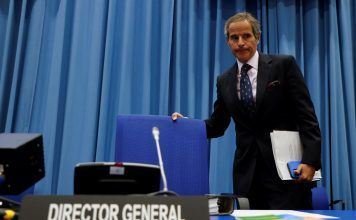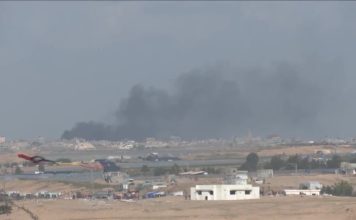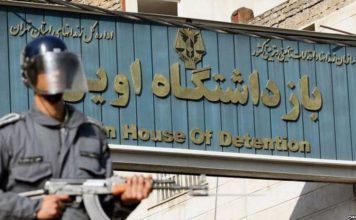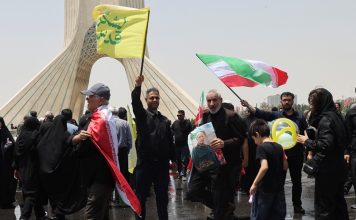By Kayhan Life Staff
The shortage of doctors specializing in women’s healthcare, including obstetrics and gynecology (OB-GYN), is to blame for some young mothers’ deaths while giving birth to their first child, according to Mohammad Raiszadeh, the president of the Islamic Republic of Iran Medical Council (IRIMC),.
“Studies conducted in our country have shown that the average age of most mothers who die while giving birth to their first child is between 30 and 35,” the semi-official Fars news agency quoted Mr. Raiszadeh saying on Oct. 29. “Lack of medical specialists caused 45 percent of these deaths.”
“Another study showed that 17 percent of these deaths were caused by the shortage of specialists in women’s healthcare, which means that the specialization [of physicians] must change,” Raiszadeh explained.
“According to data, on average, 200 women die globally during delivery for every 100,000 live births,” Raiszadeh noted. “The data shows that 20 women died for every 100,000 live births in the past 40 years in our country, which is one-tenth of the global figure, and much better than what the world has planned until 2030.”
[aesop_image img=”https://kayhanlife.com/wp-content/uploads/2023/02/2022-03-10T000000Z_2055427854_MT1NURPHO00046EMTZ_RTRMADP_3_HEALTH-CORONAVIRUS-IRAN.jpg” panorama=”off” credit=”An Iranian nurse wearing a protective suit walks along a corridor in a hospital in the city of Qom 145Km (90 miles) south of Tehran, Iran. REUTERS./” align=”center” lightbox=”on” captionsrc=”custom” captionposition=”left” revealfx=”off” overlay_revealfx=”off”]
Fars report included comments by the former spokesperson for the Health Ministry, Iraj Harirchi, who claimed a tenfold increase in the number of doctors in the past 40 years but added: “Despite this increase, there are still dissatisfaction and complaints about the shortage of specialist physicians, especially in the disadvantaged regions.”
“The main reason for this is the overall shortage of doctors and specialists per capita in Iran and compared to similar countries,” Mr. Harirchi added.
According to data, for every 7,000 women in Iran, there is only one doctor specializing in women’s healthcare, Fars said. Women’s healthcare is a single-sex field of medical practice, i.e., male physicians cannot specialize in this area.
In comments reported by Fars on October 24, Hojjatoleslam Seyyed Ruhollah Hosseini, a senior teacher at the Qom Seminary, said religious laws forbid male doctors and nurses to work in hospital obstetric units (labor ward, delivery suite).
While noting that a male doctor can attend to a female patient “when it is necessary” and only “if there are no women doctors around,” Hojjatoleslam Seyyed Ruhollah Hosseini explained: “Such conditions exist mostly in disadvantaged regions, not in major cities like Tehran where there is no shortage of women doctors and specialists.”
“All hospitals in Tehran must uphold religious laws, given that it is easy to find women doctors working in a labor ward,” he added.
The “Hijab and Chastity” bill calls for gender segregation of hospital wards and male and female doctors providing medical treatment to men and women, respectively.
The Majlis (Iranian Parliament) debated the “Hijab and Chastity” bill in June, enabling the government and the Judiciary to intrude in every aspect of people’s lives, including fining “hijab violators” and instituting gender-based university classrooms and hospitals.
Citing published data, the Mehr News Agency reported on Oct. 28 that there were no obstetricians and gynecologists in 91 small towns in the country, i.e., “if girls, women and mothers living in these regions develop female-related illnesses or health issues, they either ignore it or are forced to seek treatment in another city.”
In comments reported by the Fars news agency on June 13, the deputy director of the treatment department of Hormozgan Medical University, Hassan Zarei, said the towns of Jask and Bashagard, in the southern province of Hormozgan, struggled with a shortage of specialist doctors.
According to Mr. Zarei, there are only two specialists in Jask Hospital’s women, children, internal medicine, anesthesiology, and ophthalmology departments. When one is absent, the other must handle all cases.
Some administrators of state hospitals worry about healthcare moving into the private sector.
Higher Iranian Birth Rate Would Solve Population Challenge, Official Says
Speaking at an event in the western province of Ilam on Oct. 23, the deputy director of the Iranian Legal Medicine Organization (the national medical examiner’s office), Reza Haj-Manouchehri, said that only 48 percent of the 7,230 posts at the medical examiner’s office were occupied, and the remaining 58 percent were vacant.
“We face a challenging situation caused by the workforce shortage and people leaving various departments in the medical examiner’s office because of the difficult nature of the job,” the Young Journalist Club (YJC) news agency quoted Mr. Haj-Manouchehri, saying. “In the past five years, 111 physicians have left the organization. Of the 118 tested this year, we could not fill 18 positions because there were not enough applicants.”
In comments reported by the Mehr News Agency on Oct. 29, Mohsen Khaleghian, the administrator of Tehran’s Firoozgar Hospital, warned about the state hospitals going bankrupt and closing.
“Unrealistic fees have caused 58 nurses to leave our hospital,” Mr. Khaleghian explained. “State hospitals will face a crisis if the trend continues.”
In comments reported by Etemad news online on June 6, Iraj Khosronia, the president of the Iranian College of Internal Medicine, said: “Some doctors have stopped practicing medicine and got other jobs, including working as [independent taxi] drivers or exchanging [U.S.] dollars.”
“Between 10,000 to 12,000 doctors, including specialists and subspecialists, have left Iran in the past three years because of financial difficulties,” Mr. Khosronia added.
In an interview with the Tehran-based Rouydad-24 news agency on Oct. 22, Massoud Pezeshkian, a member of the Majlis’ Health and Medical Commission, said: “In a few years, we will be forced to seek medical treatment abroad.”
“Doctors cannot make ends meet on the fee structure set by the government, so we cannot blame them for leaving the country,” Mr. Pezeshkian added.
Speaking to the Tehran-based Shafaqna News Association on Sept. 20, Moeddin Saeedi, a Majlis deputy representing the southeastern province of Sistan and Baluchestan, warned that at the current migration rate of physicians, Iran will be forced to “recruit doctors from India and Bangladesh.”
“Decision-makers do not seem to understand the gravity of the situation,” he argued.
The reality differs vastly from the government’s claims that the reports on the shortage of doctors and medicine are exaggerated.
In an interview with the Iranian Labor News Agency (ILNA) on July 4, Iran’s Minister of Health and Medical Education, Bahram Eynollahi, argued that reports about the shortage of 200 medicines were “inaccurate,” adding that “we have eliminated every cause of medicine shortage in the past two weeks.”
In an interview with the Eghtesad Online on Oct. 27, Yahya Ebrahimi, a member of the Majlis’ Health and Medical Commission, said: “There is a shortage of over 300 medicines in pharmacies. However, the government claims that everything is fine.”
Speaking to the Tasnim news agency on June 19, Mohammad Abdehzadeh, the chair of the Board of Iranian Pharmaceutical Industries syndicate, said: “There is a shortage of over 200 medicines. The principal reasons for the shortage are lack of foreign currency, failure to price the products, delay in paying drug companies, and transferring foreign exchange.”
“Nearly 90 percent of pharmacies do not have essential drugs,” Mr. Abdehzadeh noted. “Non-designated pharmacies form 90 percent of the private sector. State pharmacies do most of the business. Private pharmacies experience severe medicine shortages because non-designated pharmacies cannot sell certain drugs. As a result, the private sector is experiencing a severe shortage.”
In an interview with the Iranian Labor News Agency (ILNA) on July 17, Abdolnaser Derakhshan, a Majlis deputy representing the southeastern province of Sistan and Baluchestan, said Sarbaz township did not have an antivenom clinic to treat people with snakebites.
“People should not die because of a shortage of medicine,” Mr. Derakhshan argued. “There is a significant lack of medical care in Sarbaz. Sometimes, there is even no doctor around. There is a serious lack of antivenom drugs to treat snakebites and scorpion stings.”













